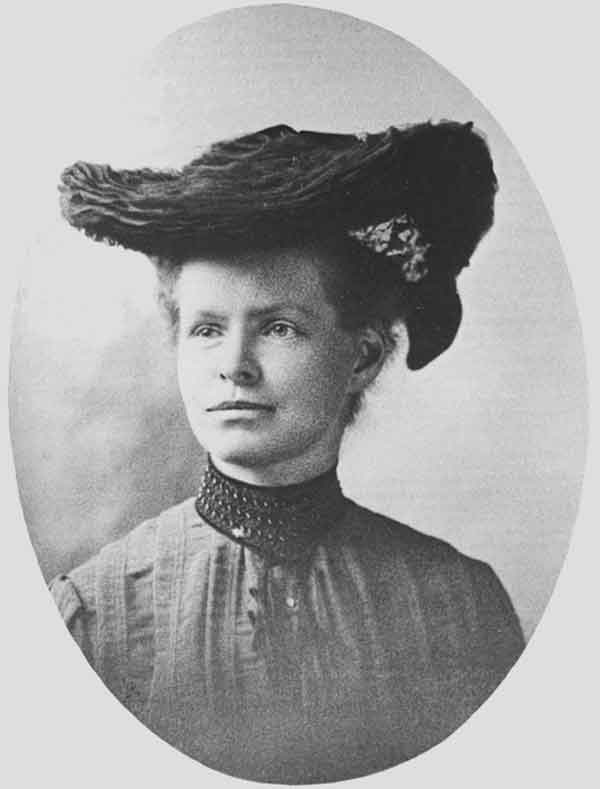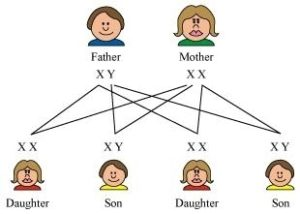How is sex determined?
The Matilda effect in biology
Take a second to consider the following question. A baby is born but who or what decides its sex? Is it mere chance or do external factors play some kind of role? Perhaps it depends on the kind of juice the mother’s been drinking? Or perhaps the father’s mood has a role to play somehow?

Figure 1. Nettie Stevens.Image: The Incubator.
The possibilities are endless and had baffled scientists for centuries. While Hippocrates thought that the vigour of the parents was the main factor, Galen in the 1st century stated that cells from the right ovary produced males while those from the left produced females. There were several other outrageous theories – of course, they seem outrageous now but were accepted as scientific explanations when they were first proposed. Notably, Aristotle thought that the sex of the fetus depended on the temperature of the father’s sperm during ejaculation. And a common legend even stated that it depended on the phase of the moon, the direction of the wind and even the time of day during fertilization!
An answer to the question
In the early 1900s, Nettie Stevens finally gave the real answer to the question. She was one of the first American women scientists to receive some well-deserved recognition for her work, as I mentioned in my previous article. She is credited with the discovery of the sex chromosomes which ultimately put an end to all the strange theories. Her contemporary and at the time a more celebrated scientist was Edmund Beecher Wilson – they worked on the same topic, albeit never together, and closely followed each other’s research. Both of them studied various insects and discovered unequally sized chromosomes.

Figure 2. Stanford.The North Facade at Stanford University. Source: American Physical Society.
Nettie was born in 1876 in Cavendish, Vermont. She was curious about science from a young age and went on to earn both a bachelor’s and a master’s degree from Stanford University. After this, she entered Bryn Mawr, a small women’s college, as a doctoral student. This proved to be very instrumental for her successful career since two of America’s leading biologists – Edmund Wilson and Thomas Morgan – were professors at Bryn Mawr at the time. Nettie was considered an extremely promising student and had published nine papers by the time she finished her PhD in 1903. This made her eligible for special fellowships and prizes. On of those grants, owing to her glowing recommendations, allowed her to proceed with her research at Carnegie Institution. Here, she would make her life’s biggest discovery that allowed her to be remembered long enough for me to write this article and for you to read it.
Chromosomes
Here would be a good place to pause the historical details and actually understand what chromosomes are and what Stevens and Wilson might have observed.
“Oh, it must be in your genes” is a sentence you’ve probably heard at least once in your life. People usually use the term ‘gene’ to describe a similarity between you and your mother or you and your father. This is because genes contain DNA which is the chemical basis of hereditary traits. A group of these genes forms a chromosome. Chromosomes are present in pairs in the nucleus of both plant and animal cells. They exist in pairs because we receive one from each parent. 22 pairs of chromosomes in a cell look exactly the same and are called autosomes. However, the 23rd pair can be different and is called an allosome. This last pair consists of the sex chromosomes – called X and Y. This pair determines the sex of the fetus, as Nettie finally discovered.
If you’re a girl, your 23rd pair of chromosomes are XX while if you’re a boy, they’re XY. At the time of fertilization, the mother contributes one X chromosome but the father could contribute either an X or Y chromosome. This second chromosome becomes the determining factor for the sex. Basically, we can say that the father is responsible for the sex of the baby.

Figure 3. Chromosomes.The father’s chromosome determines the sex of the baby. Image: Studypage.
In 1902, shortly before Nettie’s discoveries, C. E. McClung had suggested that an “accessory chromosome” which itself was previously suggested by Hermann Henking, played a crucial role in sex determination. His hypothesis was along the lines of how this extra chromosome carried traits pertaining to males which was responsible for determining sex. Although his hypothesis turned out to be false, it still managed to stimulate brilliant minds like Nettie’s. On the other hand, Mendel’s controversial theory of inheritance had recently been rediscovered in 1900. Nettie began studying both these theories by investigating various kinds of insects. In 1904, she published a paper stating that she was unable to observe McClung’s extra chromosome. But her research had taken better form and direction by now and her goal was clear.
Her luck changed when she began studying common mealworms (Tenebrio molitor). She discovered two different kinds of chromosomes being responsible for producing males and females respectively. Her work, ‘Studies in Spermatogenesis’ was published in 1905 in which she concluded:
Since the somatic cells of the female contain 20 large chromosomes, while those of the male contain 19 large ones and 1 small one, this seems to be a clear case of sex- determination, not by an accessory chromosome, but by a definite difference in the character of the elements of one pair of chromosomes…
(N. M. Stevens, Studies in Spermatogenesis with Especial Reference to the “Accessory Chromosome”; Washington, D.C.: Carnegie Institution of Washington, Publication No. 36, September 1905; p. 13.)
Credit where credit is due?
However, Nettie’s theory did not gain popularity right away. Edmund Wilson published a similar result a month after Nettie. She made a bigger theoretical leap by completely ruling out environmental factors while Edmund still assumed that they might have a role somehow. In the end, Nettie’s theory was proven correct although both are credited with the discovery. This is highly controversial since many think that Edmund saw her results first and then published his paper.
Nettie’s colleagues at the time considered her a significant American scientist, having published thirty-eight papers until her death in 1912 at age 50. Her academic career was indeed very short but she accomplished much more than most do in longer careers. It’s true that she had better opportunities than most women at the time but it’s also true that it wasn’t always easy for her. Unfortunately, she did not always receive the credit she deserved and records of her vanished. What’s worse is that her contributions to the field were often considered in a subordinate manner with respect to Wilson.
Nettie represents the 19th-century American woman, full of dreams and hope. It’s time to fully recognize and appreciate the contribution she made to cytology and to a new science of genetics. And to also appreciate a creative scientist, in her own right.